One of my favorite aspects of the tapping community is how willing people are to share their wisdom and experience. Recently I asked a number of practitioners I admire about how they approach healing, client work, and their own journey. Below are some of my favorite answers to one of those questions. Make sure you check out all five questions.
What is one thing you wish your clients believed about the healing process?
When Fear directs the process, healing slows down. When the Soul or Love directs the process, miracles can happen. Their journey into healing, wholeness, and mystical awakening is their unique journey. Their pace is perfect and their progress is perfect. Learning to reset from fear into love is simply part of your journey. Alan Davidson
Keep trying other modalities until you find the one for you. In the Energy Psychology world, this might be EFT, Heart Assisted Therapy (HAT), Tapas Acupressure Techniques (TAT), Brief Energy Correction (BEC), and more. Try another practitioner, too if you are not making progress. You are worth it, pursue your healing journey any way and anywhere you can. Robin Bilazarian, LCSW
That it is indeed a process! That it can take twists and turns. Things that seem unrelated to their current concern can arise and it's important for them to be addressed. It is a cliché, but so true: trust the process. This is work. It's the most important work anyone can ever do. And it is so, so worth it! Kris Ferraro
I wish they knew and believed that the healing process can be gentle, easy, beautiful and an amazing process filled with so much love. Deborah D Miller
100% percent belief that they will heal. I think we have been so conditioned by the media and schooling that we have limiting beliefs around nature’s ability to heal us. We put the power outside of ourselves, rather than owning our own power. Years ago the shaman would just perform a ritual and the person would heal. Their own belief system worked for them effortlessly. For me it is about getting back that trust in natural healing methods.
Tania A PrinceI wish my clients believed that a recurrence of an emotional upset or issue is a normal part of the healing process. It doesn't mean that they have failed to ‘do this right' or failed to make any progress. I wish they could distinguish when they have made progress and see that they are now being presented with a new opportunity to heal further. Ange Finn
I wished they believed that the healing process is their human right. That an innate desire for healing and growth is built into human biology – and if we can find a way to provide the conditions of psychological/emotional safety, the human system will move toward a natural evolution. And of course, that even though there are miracles along the way, the process of healing is a lifelong endeavour. The possibilities are endless. Nancy Forester
There is never just one answer or one way to move through the healing process. You may feel up, down, sideways or crooked for days…even months. And then suddenly the movements and synchronicities start to shift and shine through. Truly, anything is possible. I wish everyone believed this. Every person has the power within to heal. Julie Schiffman
The importance of noticing small changes in the right direction. Mary Ayers
That they are not victims of the process, but they are in charge of it. Once they understand that they are an integral part of the underlying process, they then start to use it more effectively and extricate themselves from being victims. Ted Robinson
I believe that any belief that doesn’t serve you can be changed. If I could get my clients (and the world) to believe that, I would be content with that as my life’s work.
Pamela BrunerYou are designed as a divine being that has the ability to constantly renew yourself. Just like a wound on your skin, this is the regenerative process that occurs naturally, whether you want it or not. Emotional wounds will not heal if they are not allowed to through remembrance of these with resentment, anger, fear and hate. If you inundate your soul with Love and forgiveness, you will heal. Remember an emotion is not a fact…you can let it go.
Till SchillingDon’t judge the shift by the drama! For whatever reason, some clients believe that they need a massive cathartic experience with lots of drama to change and heal. Yet, in the hands of a skilled practitioner, healing can be gentle, subtle and complete.
Rod SherwinI wish they believed that it can be fun. It doesn’t have to be deadly serious and earnestly heartfelt all the time. Humor is so healing in itself, and to mix it into any healing process is a total blessing. I have found that it really speeds things up. It goes against the common belief that unless the healing is a struggle, it’s not worth much. I wished they believed that the healing process can feel good — because it most definitely can.
Janet Hilts
 My friend Catherine Poole uses the term “weight release” instead of “weight loss”. I prefer “weight release” because I think it speaks to a more holistic approach to improving health than just diet and exercise.
My friend Catherine Poole uses the term “weight release” instead of “weight loss”. I prefer “weight release” because I think it speaks to a more holistic approach to improving health than just diet and exercise.  Question: I would like to know whether it is best to talk out loud when you're tapping or if it's okay to just focus on the issue, memory, or body sensation without using words? I wonder if whether using words silently or out loud engages a specific part of the brain and whether or not this has a different effect?
Question: I would like to know whether it is best to talk out loud when you're tapping or if it's okay to just focus on the issue, memory, or body sensation without using words? I wonder if whether using words silently or out loud engages a specific part of the brain and whether or not this has a different effect? Question: For people who don't like numbers and tend to measure intensity in very subjective terms, how do you guide them to more meaningful/useful measurements?
Question: For people who don't like numbers and tend to measure intensity in very subjective terms, how do you guide them to more meaningful/useful measurements? Question: How can we use tapping as a remedy for others who lack confidence and suffer from various unwanted habits and physical problems?
Question: How can we use tapping as a remedy for others who lack confidence and suffer from various unwanted habits and physical problems?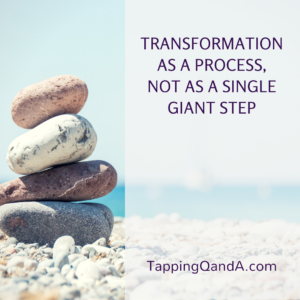 Question: When you're doing your tap-along audios you say the words “in big and small” ways a lot. I never really connected with these phrases. Could you expand on why you use those phrases?
Question: When you're doing your tap-along audios you say the words “in big and small” ways a lot. I never really connected with these phrases. Could you expand on why you use those phrases?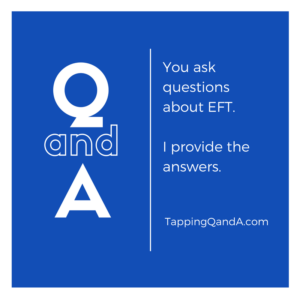 A few weeks ago I put out the call for your questions about EFT and how to best use it.
A few weeks ago I put out the call for your questions about EFT and how to best use it.
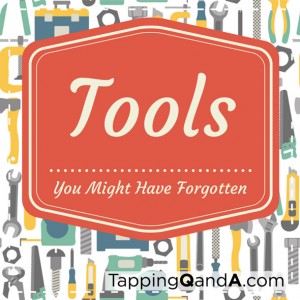 Many people don't know that the T in EFT stands for “Techniques”, which is plural.
Many people don't know that the T in EFT stands for “Techniques”, which is plural.
 Last year I spent some time trying to figure out what my next venture would be.
Last year I spent some time trying to figure out what my next venture would be. A few weeks ago in
A few weeks ago in 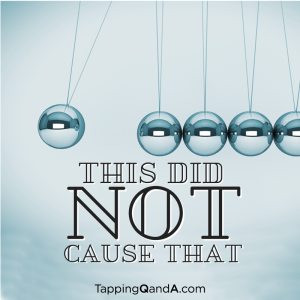
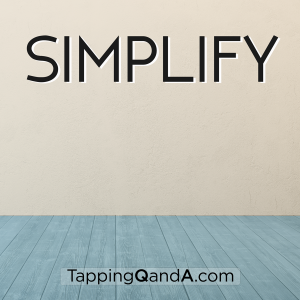 Learning EFT can be very exciting at first. Tapping is so easy.
Learning EFT can be very exciting at first. Tapping is so easy. 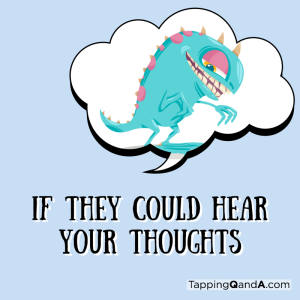 A number of years ago Andy Hunt wrote an interesting article on his site
A number of years ago Andy Hunt wrote an interesting article on his site